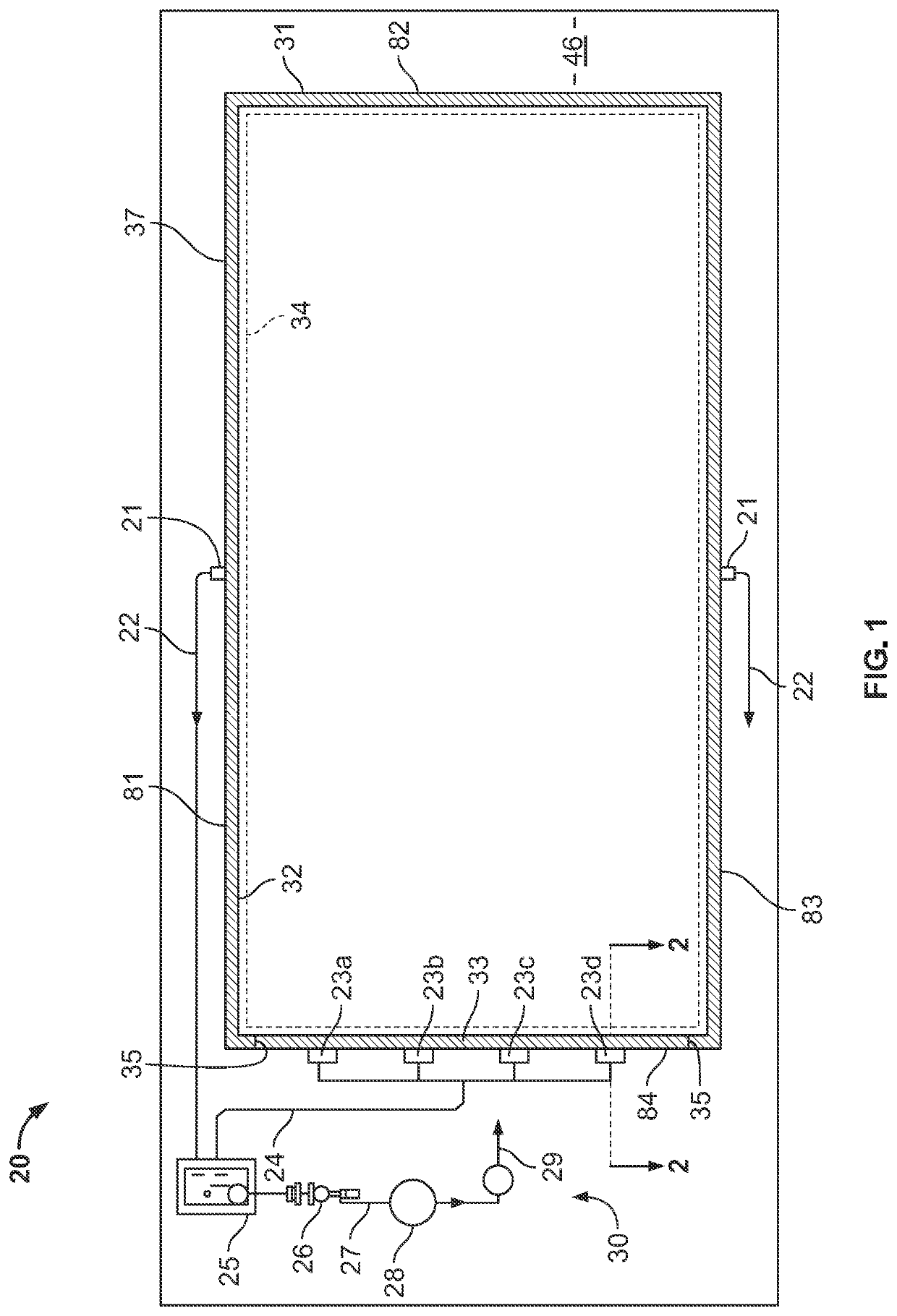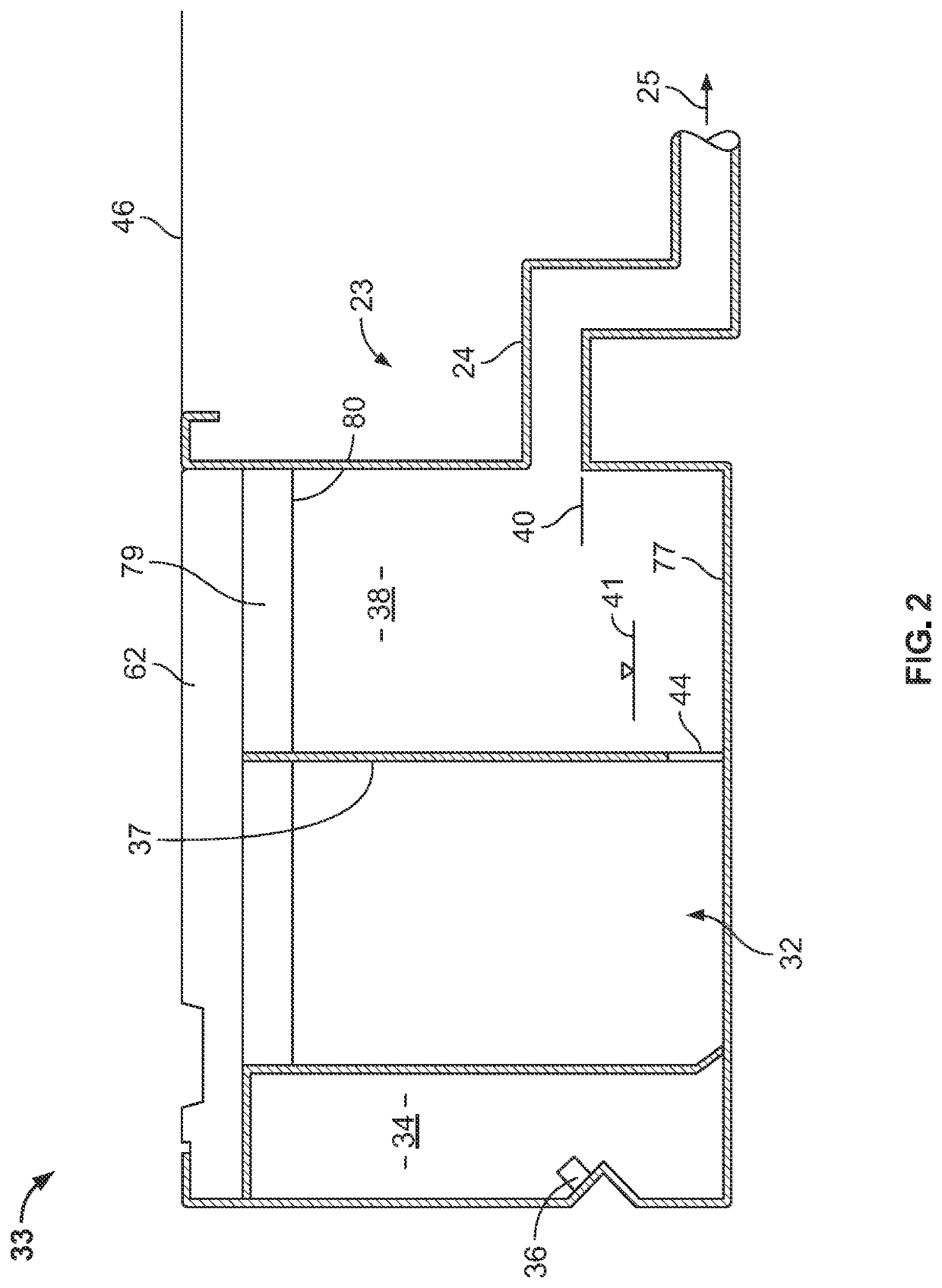Pool gutter and air exhaust assembly
- Summary
- Abstract
- Description
- Claims
- Application Information
AI Technical Summary
Benefits of technology
Problems solved by technology
Method used
Image
Examples
Embodiment Construction
[0015]Turning now to the drawings, an embodiment of a pool perimeter assembly (20) is shown in FIG. 1. Three of four sides (81, 82, 83) of a pool perimeter comprise a conventional gutter system (31) for receiving and draining back-splash pool water. A preferred embodiment of the perimeter gutter system comprises a gutter conduit (32) and a filtered water return conduit, indicated schematically at (34) in FIG. 1. The filtered water return conduit may extend around the entire perimeter of the pool as illustrated in FIG. 1. However, in other embodiments the filtered water return conduit extends only partially around the pool perimeter. A plurality of converter boxes (21) collect water from the gutter conduit and convey the same (arrow (22)) to a water filtering and return system, indicated generally at (30). The water filtering and return system comprises a surge tank (25), a strainer (26), a pump, filter (28), and filtered water return line (29) that conveys the filtered water to the ...
PUM
 Login to View More
Login to View More Abstract
Description
Claims
Application Information
 Login to View More
Login to View More - R&D
- Intellectual Property
- Life Sciences
- Materials
- Tech Scout
- Unparalleled Data Quality
- Higher Quality Content
- 60% Fewer Hallucinations
Browse by: Latest US Patents, China's latest patents, Technical Efficacy Thesaurus, Application Domain, Technology Topic, Popular Technical Reports.
© 2025 PatSnap. All rights reserved.Legal|Privacy policy|Modern Slavery Act Transparency Statement|Sitemap|About US| Contact US: help@patsnap.com



